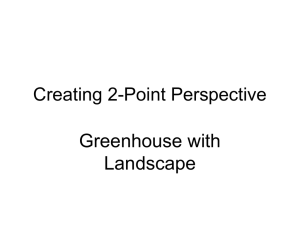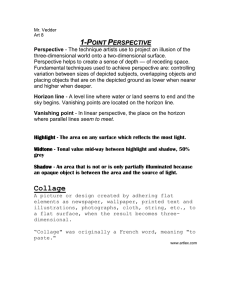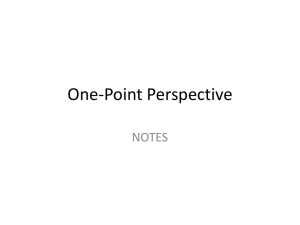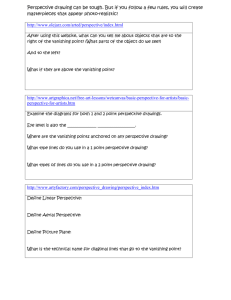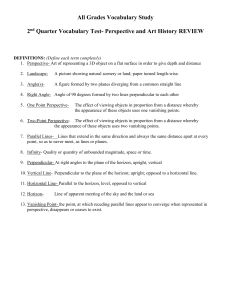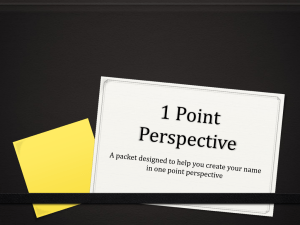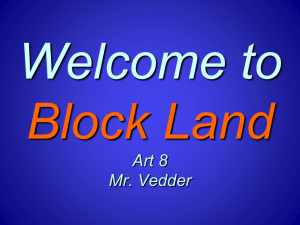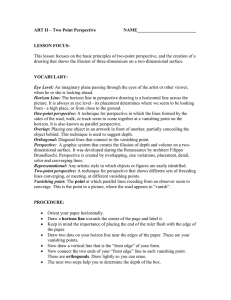Drawing Packet (October).docx
advertisement
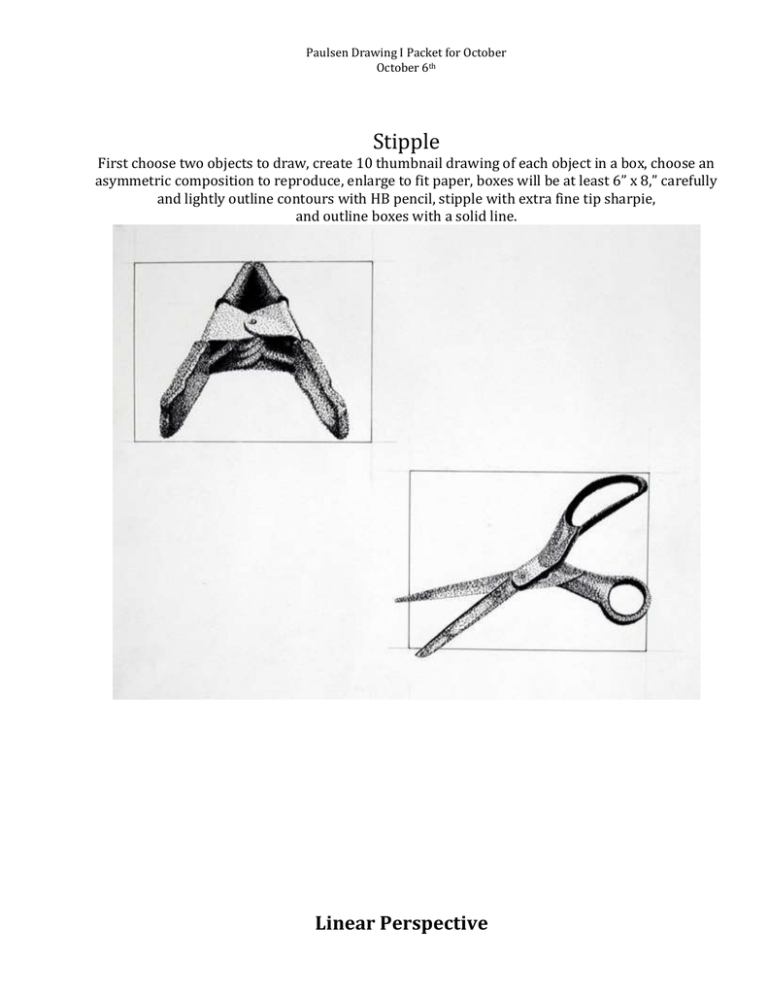
Paulsen Drawing I Packet for October October 6th Stipple First choose two objects to draw, create 10 thumbnail drawing of each object in a box, choose an asymmetric composition to reproduce, enlarge to fit paper, boxes will be at least 6” x 8,” carefully and lightly outline contours with HB pencil, stipple with extra fine tip sharpie, and outline boxes with a solid line. Linear Perspective Linear Perspective: a systematic method for creating the illusion of space and distance on a flat surface. The system originated in Florence, Italy in the early 1400’s The artist and architect Brunelleschi demonstrated its principles. Architect and writer, Leon Battista Alberti was the first to write down the rules of perspective. The revolutionary system of geometric, linear perspective was widely adopted by 15th Century Italian Renaissance artists, such a Leonardo DaVinci and Raphael. Today artists and architects still use the principles of linear perspective to represent objects in spaces such a buildings, interiors, furniture and even organic objects such as trees or figures. Basic Vocabulary Picture Plane: the surface on which you draw. Also an imaginary vertical surface, like a window, through which you look at your object. Eye Level: the position where your eyes are located in relation to the subject viewed. Horizon Line: the place where the earth and sky seems to meet. The horizon line is the same as your eye level, because the height of your eye level determines where you will see the horizon. Diminishing Size: objects appear to get smaller as they move away in space. Horizontal: a line that travels in the direction of or parallel to the horizon. Vertical: a line perpendicular to the plane of the horizon. Perpendicular: something that is at a right angle (90 degrees) to another line or surface. Parallel: lines that if extended into space would always be the same distance apart. Converging Lines: lines that are parallel and receding in space, appear as if they would intersect if they continued in space. Vanishing Point: the place where the converging lines disappear on the horizon line, all lines parallel to each other and receding from the picture plane go to the same vanishing point. Two Point Perspective: two dimensions are receding from the picture plane, two vanishing points, one for each dimension. 1. Place a box or object on a flat surface slightly turned to that both the front and the side are receding from your point of view, as pictured above. 2. Draw the leading edge (the edge closest to you). It is the vertical height edge of the box. 3. Determine your eye level, measure from the top of the leading edge to your actual eye level. This measurement determines where you place the horizon line. Add the horizon line. 4. Determine the vanishing points by measuring the angle at which the depth is receding. Mark both the left and right vanishing points. Note: most often the vanishing point will not be on your paper, but somewhere on the horizon line as if it continued off of your paper onto your desk or even into the room. You may mark a point on your desk with tape or pick a point in the room to represent the vanishing point, just remember that the vanishing point must intersect the horizon line. 5. Draw the receding depth by connecting lines form the top and bottom point of the leading edge to the vanishing points. 6. Determine the depth of the box and draw two verticals (one for each side) to limit the depth. 7. Add the back edge depth by drawing a line from the top point of the left vertical to the right vanishing point and a line from the top of the right vertical to the left vanishing point. Oct 13th Two Point Perspective 18” x 24” Draw Boxes on table using directions and shade with pencil or charcoal October 13th Homework One Point Perspective (11” x 17” paper, with pencil shading)
